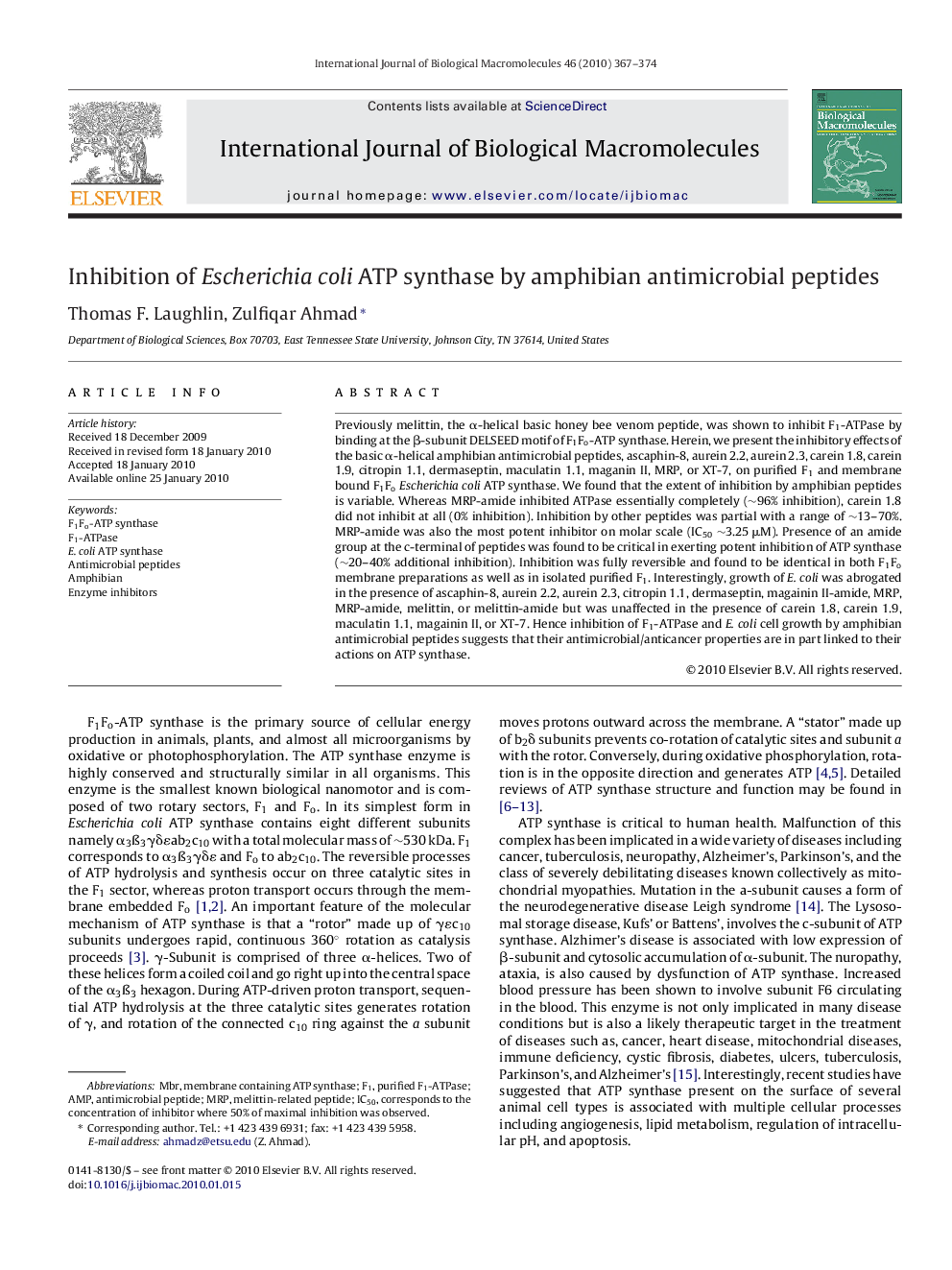| کد مقاله | کد نشریه | سال انتشار | مقاله انگلیسی | نسخه تمام متن |
|---|---|---|---|---|
| 1987526 | 1540295 | 2010 | 8 صفحه PDF | دانلود رایگان |

Previously melittin, the α-helical basic honey bee venom peptide, was shown to inhibit F1-ATPase by binding at the β-subunit DELSEED motif of F1Fo-ATP synthase. Herein, we present the inhibitory effects of the basic α-helical amphibian antimicrobial peptides, ascaphin-8, aurein 2.2, aurein 2.3, carein 1.8, carein 1.9, citropin 1.1, dermaseptin, maculatin 1.1, maganin II, MRP, or XT-7, on purified F1 and membrane bound F1FoEscherichia coli ATP synthase. We found that the extent of inhibition by amphibian peptides is variable. Whereas MRP-amide inhibited ATPase essentially completely (∼96% inhibition), carein 1.8 did not inhibit at all (0% inhibition). Inhibition by other peptides was partial with a range of ∼13–70%. MRP-amide was also the most potent inhibitor on molar scale (IC50 ∼3.25 μM). Presence of an amide group at the c-terminal of peptides was found to be critical in exerting potent inhibition of ATP synthase (∼20–40% additional inhibition). Inhibition was fully reversible and found to be identical in both F1Fo membrane preparations as well as in isolated purified F1. Interestingly, growth of E. coli was abrogated in the presence of ascaphin-8, aurein 2.2, aurein 2.3, citropin 1.1, dermaseptin, magainin II-amide, MRP, MRP-amide, melittin, or melittin-amide but was unaffected in the presence of carein 1.8, carein 1.9, maculatin 1.1, magainin II, or XT-7. Hence inhibition of F1-ATPase and E. coli cell growth by amphibian antimicrobial peptides suggests that their antimicrobial/anticancer properties are in part linked to their actions on ATP synthase.
Journal: International Journal of Biological Macromolecules - Volume 46, Issue 3, 1 April 2010, Pages 367–374